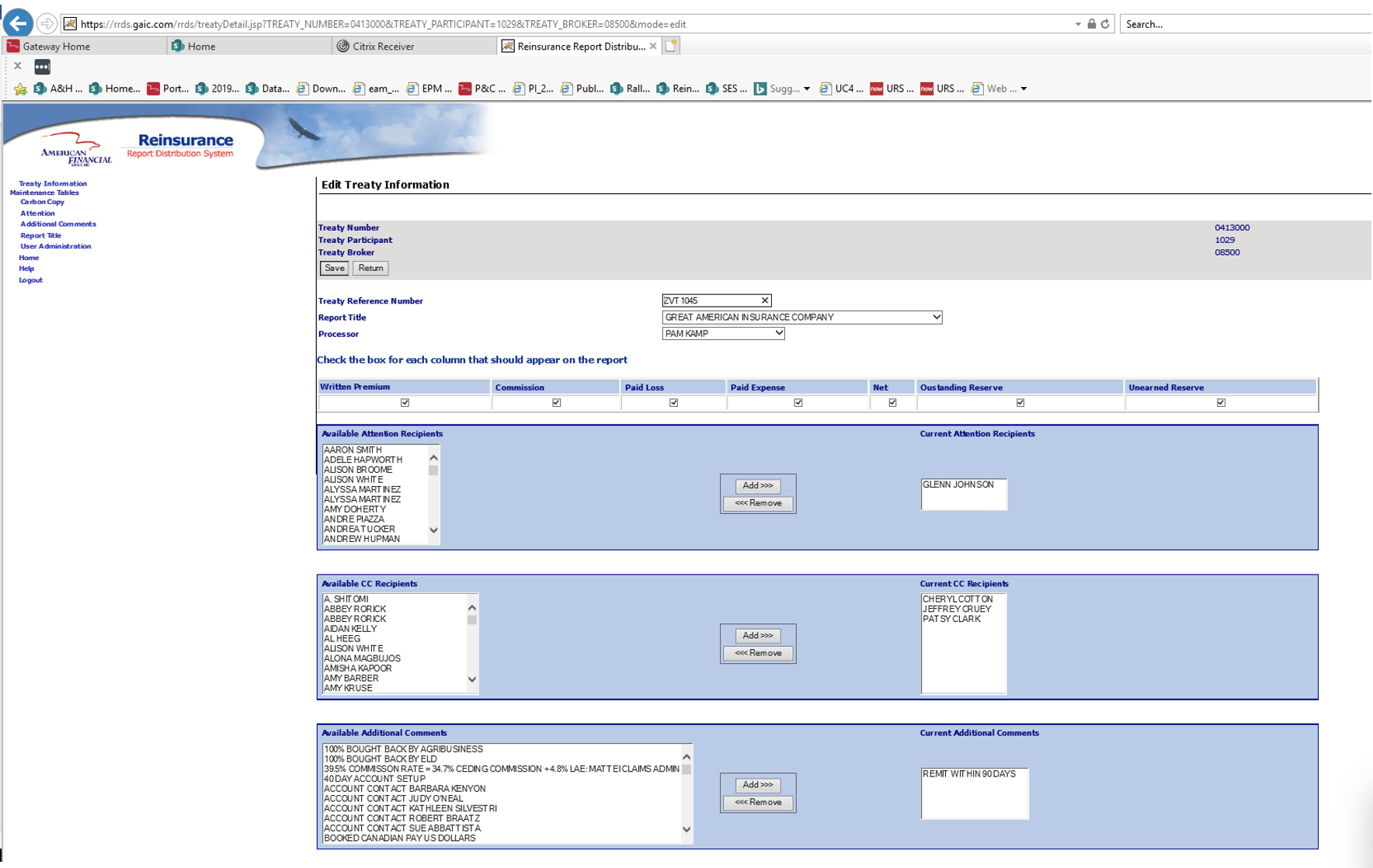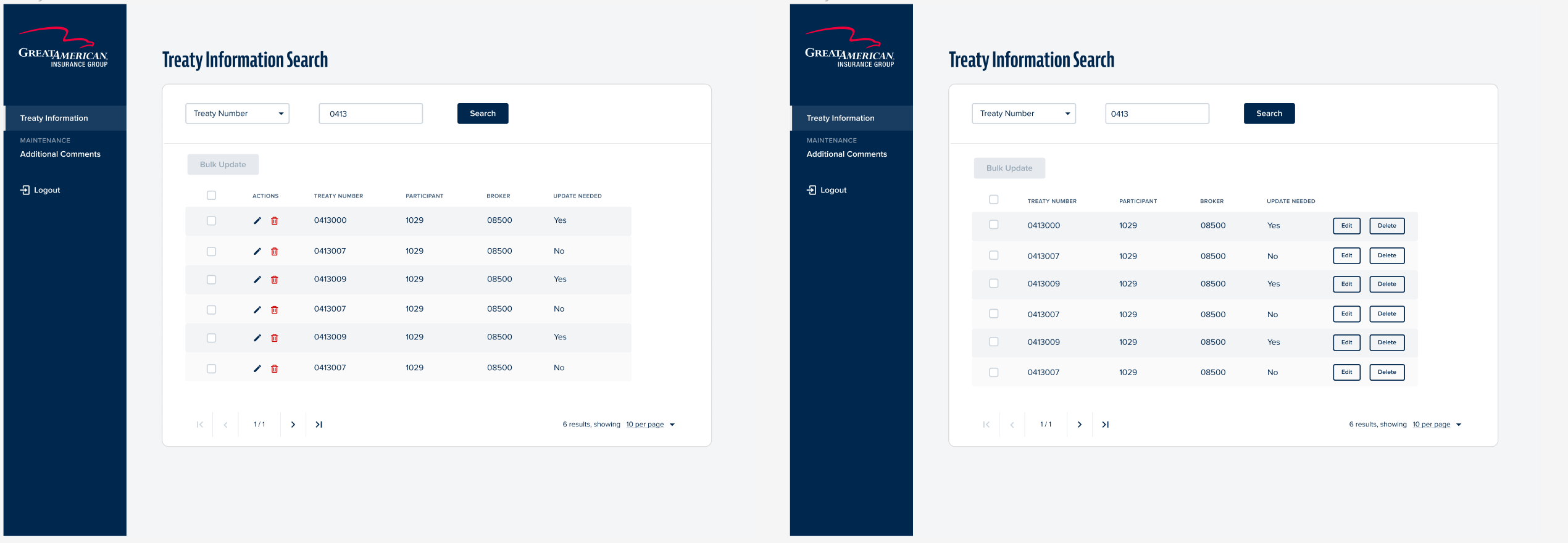An Outdated Accounting Tool Undergoes a Product Redesign
Problem
The reinsurance accounting department has used the same tool for 15 years. Without updates, it was not only outdated, but one that contained extraneous information.
Goal
Rewrite an existing application that updates the content to what the users need today in order to do their job more efficiently.
Team
Product Owner, Project Manager, Developers, UX Designer
Tools
Figma and Miro
But first, a little insight...
In 2021, a third-party organization built the early stages of a design system for the company. In 2022, the company's UX design team inherited this design system knowing that we would need to prioritize its growth. As we continue to mature the design system, our goal is to move towards creating a component library.
This accounting tool utilizes the company’s early-stage design system.
Research & Design
For this project, our team was tasked with updating and rewriting a tool that the reinsurance accountants used for reporting. The tool had not been touched since it was created 15 years ago. As imagined, both the content and the code were outdated.

Original Tool
After a demo of the current tool by the product owner, I had a better understanding of how the tool was used. I conducted several user interviews where I learned about their workflows and areas of friction. From these conversations, two main pain points were discovered. Around 60% of the content was no longer needed, which was a nuisance for the users. In addition, the users were forced to individually select and update one report at a time; meaning if they had 200 reports, they would have to go through 200 updates. Working with the users, I ultimately identified which aspects of the tool were still crucial to the process and which ones were not. Our initial plan was to eliminate extraneous content, while also providing a new bulk update feature that would increase efficiency.
My next step was creating initial designs utilizing the company’s new design system. This was important to implement because the goal of a company-wide design system is to have cohesion among products throughout the organization. This project was unique in that we had a core user group that we could meet with periodically to receive feedback. After some initial designs I did some A/B testing with the users.

A/B Testing
From this testing, the users provided insightful feedback and actually asked for a combination of the two designs. This is why putting the designs in front of the users as early as possible in the design process is beneficial because we were able to pivot based on their preferences.
Throughout the process we had many user feedback sessions. We were able to get their opinions and approval before the concept went into development, which saved the developers from having technical debt in the future.
After 15 years with no changes, the users became accustomed to working around the problems. During one of the user sessions I witnessed them have a ‘light bulb’ moment when they realized our team was there to improve their experience and they could customize the tool in ways they didn’t first think possible.
Due to the frequent user feedback sessions, I had many iterations that can be seen below.




Road Block
Even with plenty of feedback sessions, problems can still arise. Unfortunately, after most of the product was built, our project manager found a problem through her QA testing. As it turns out, a version of a bulk update existed behind the scenes when certain record information matched, which caused our newly created bulk update to break on occasions. After some all-hands brainstorming sessions, our team decided that we could keep both versions of the bulk update by reworking the UI.
In the end...
The project was completed in 5 months.





The reinsurance accounting department was very pleased with the outcome of this updated product. Due to new features like the additional bulk update, our team brought the time spent on updates down from a couple hours to minutes. Overall, this product improved the experience and level of efficiency for the accountants.
Reflection
One unique aspect of this project was the quantity of user feedback we received. I began to understand that while the tool was problematic, this user group was hesitant to change. While it was important for me to understand the end users and empathize with them, I also needed to listen to the advice of my development team. I found the best way to find balance between making the user comfortable with the deliverable, while also making technological enhancements was to understand the root of the user’s problem. While the solution may look different from what the users originally conceptualized, it is important that it still solves their problems.